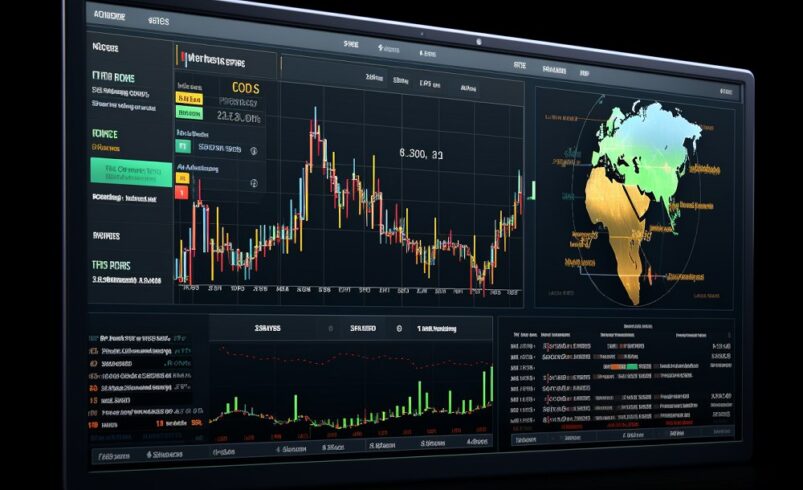Pivot Points In Crypto Trading: All You Need To Know

What Are Pivot Points?
Pivot points are critical for day traders, analyzing price movements and identifying support and resistance levels within short-term trading sessions. Initially designed by floor traders for equity and commodities markets, these points offer insights into market trends and potential bullish or bearish movements.
The concept of pivot points involves utilizing the previous trading period’s high, low, and close averages to calculate five essential levels: two sets of support, two stages of resistance, and a central “pivot point.”
This calculation involves a five-point system, where the pivot point itself is determined by the sum of the previous high, low, and close divided by three.
Calculating Pivot Points
Calculating pivot points is a fundamental aspect of technical analysis in trading. These points provide crucial insights into potential support and resistance levels, aiding traders in decision-making regarding entry and exit points within the market.
The Five-Point System
Pivot points are derived using a formula encompassing the previous trading period’s high, low, and close. This system calculates five key levels:
- Pivot Point (P): The central pivot point is the average of the previous high, low, and close prices divided by three. The formula for the pivot point is:
P = {Previous High} + {Previous Low} + {Previous Close} / {3}
- Support 1 (S1): The first support level is derived by subtracting the previous high from twice the pivot point:
S1 = (2 × P) – Previous High
- Support 2 (S2): The second support level is calculated by subtracting the difference between the previous high and low from the pivot point:
S2 = P – {Previous High – Previous Low}
- Resistance 1 (R1): The first resistance level is obtained by adding twice the pivot point to the previous low:
R1 = (2 × P) – Previous Low
- Resistance 2 (R2): The second resistance level is computed by adding the difference between the previous high and low to the pivot point:
R2 = P + {Previous High – Previous Low}
Automating Calculations
While these calculations may seem complex, many online charting platforms and trading software automatically plot these pivot points on price charts, simplifying the process for traders. These tools utilize the above formulae to generate horizontal lines representing support and resistance levels.
Time Frames For Pivot Points
Pivot points can be calculated on various time frames, including 4-hour, 1-hour, 30-minute, and 15-minute charts. The choice of time frame depends on individual trading strategies and preferences.
Implementing Pivot Points
Pivot points are often used alongside other indicators like MACD and RSI to confirm legitimate price movements. Using pivot points in trading means using certain calculated levels as important reference points to make decisions about trading.
Pivot points help traders determine areas where a traded asset might stop going down or up. They do this by identifying levels where there might be lots of buying or selling happening.
There are four primary points to look at: S1 and S2 for possible stops in a drop and R1 and R2 for potential barriers in price increases. These pivot points are more than just numbers.
They are signals for trading decisions. For example, if the price goes above the pivot, it might be a more bullish sign. If it goes below the pivot, prices might go down further.
Nevertheless, traders have different strategies based on these pivot points. For some traders, when the price breaks past the pivot level, it signals a new trading bias.
For others, they buy when prices are near S1 and sell when they’re close to R1. Traders also combine pivot points with other tools to make better decisions.
For example, suppose the price bounces off a pivot level. At the same time, another indicator shows it’s a good time to buy. In that case, it can make for a stronger signal to trade.
Some traders use pivot points for fast trading, making many trades in a day. Others use it for even quicker trades, making decisions in minutes or seconds.
Pivot points are good tools, but they’re not always the answer. When the market is extra volatile, these points aren’t often effective.
Big news events can also change how these points work. So, traders need to adjust how they use pivot points depending on what’s happening in the market.
TradeZoneCrypto.com offers high-quality content catering to crypto enthusiasts. We’re dedicated to providing a platform for crypto companies to enhance their brand exposure. Please note that cryptocurrencies and digital tokens are highly volatile. It’s essential to conduct thorough research before making any investment decisions. Some of the posts on this website may be guest posts or paid posts not authored by our team, and their views do not necessarily represent the views of this website. TradeZoneCrypto.com is not responsible for the content, accuracy, quality, advertising, products, or any other content posted on the site.









